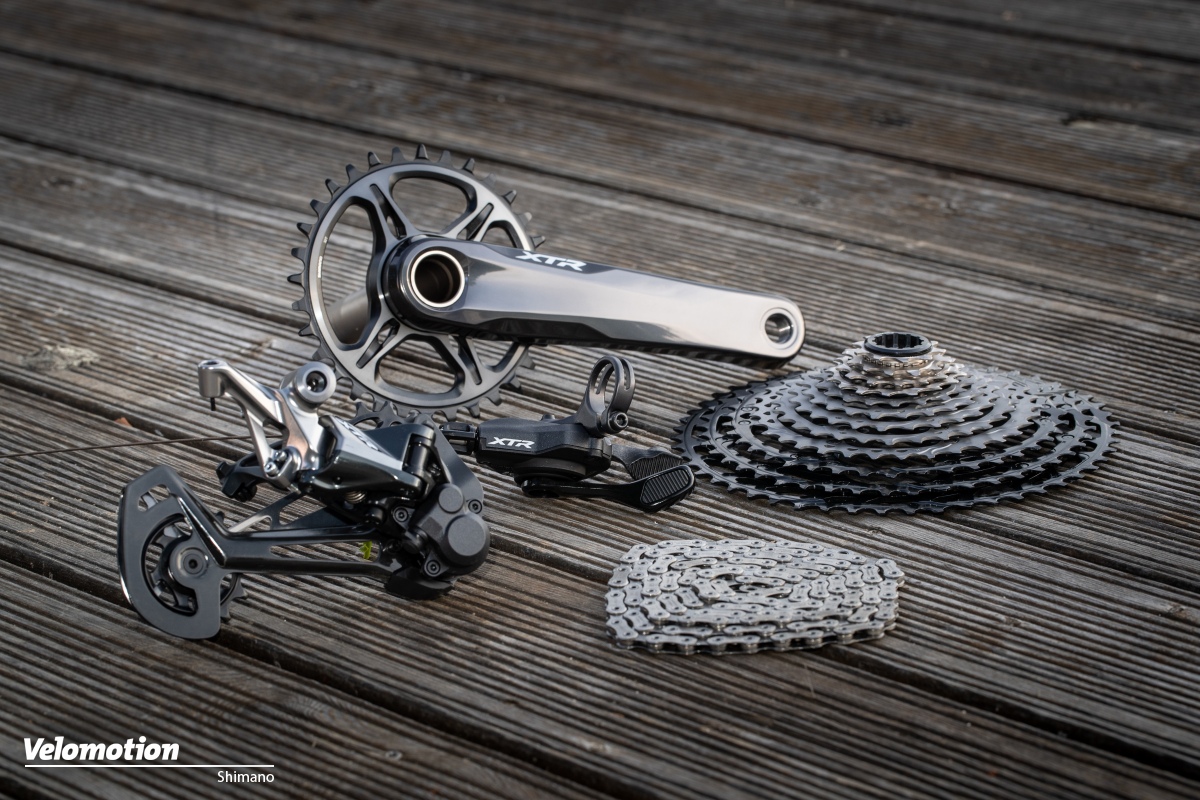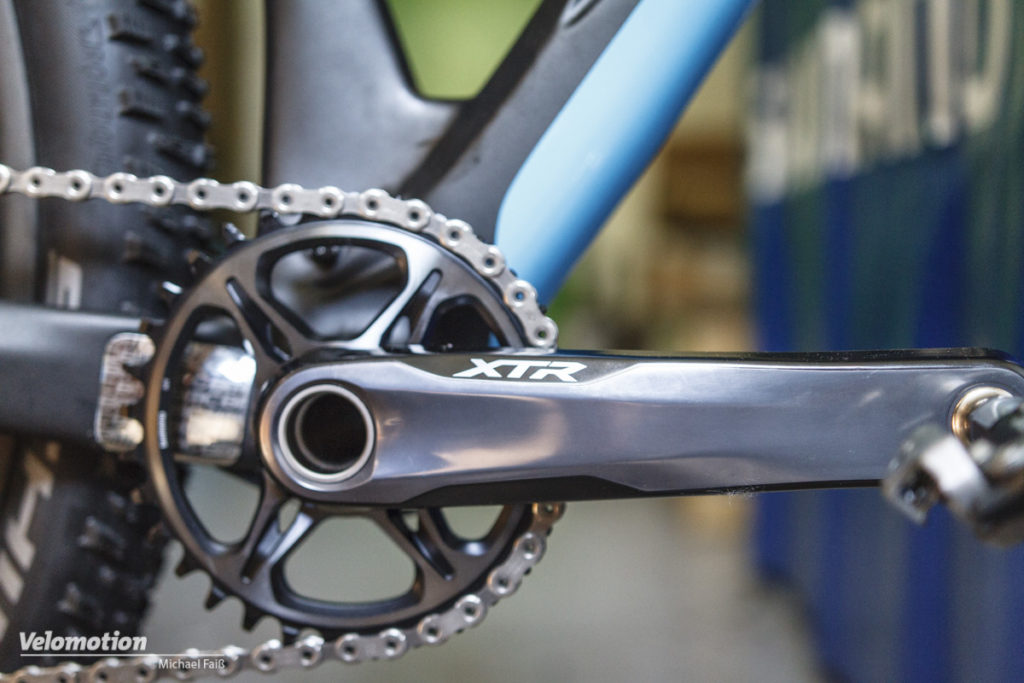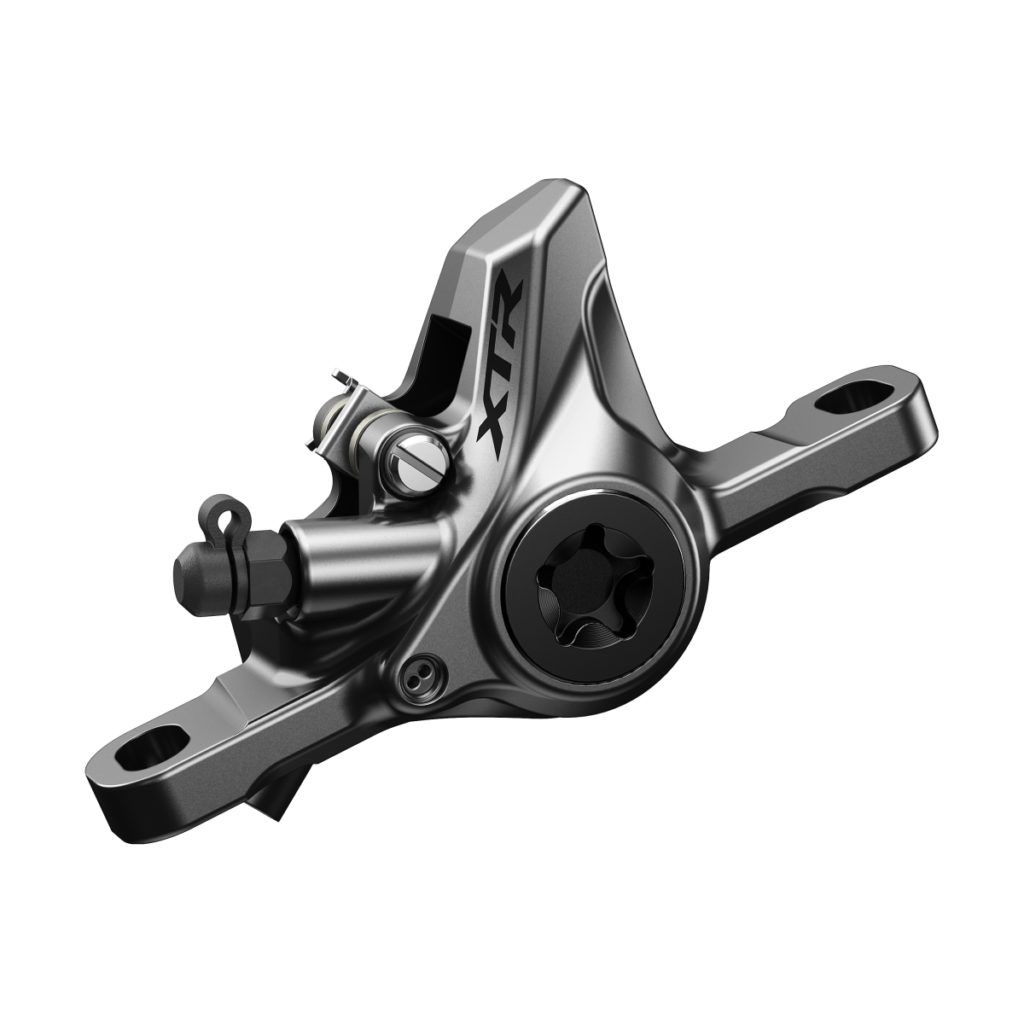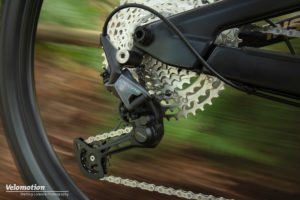Product news: The rumors are over. On the edge of the XC World Cup in Nove Mesto, Shimano presented the new MTB top group XTR today. There is a lot of news to report. In addition to a new 10-51 cassette with a new freewheel standard, there is also a 4-piston brake and the associated new components. We have summarized all information about the Shimano XTR 2019.
A lot has been speculated in the last few days and weeks - now it's official. Shimano brings a completely new XTR group for 2019, which is much more than just a small facelift and goes by the name of Shimano XTR M9100. It was eagerly awaited to see whether Shimano would jump on the 12-speed bandwagon in the future. The answer: Yes! The Shimano XTR 2019 will also be available as a 12-speed version with a wide range of 10-51(!) cassettes, but one version still has 11 sprockets on the rear wheel - but more on that later. In order to accommodate the 10 sprocket of the new cassette, however, a new freewheel is also required. Shimano goes its own way here and does not use the already established XD standard created by Sram.

There is also something new on the brake front: For the first time, the XTR group now comes with an optional 4-piston variant, and the transmitter units have also been completely redeveloped. This also includes a new I-SPEC standard - I-SPEC EV, which unfortunately will again not be compatible with the previous versions.
Shimano expressly sees its XTR as a pure racing group. In the past, however, the term mountain bike racing had a clear picture in mind, and today it ranges from rock-hard, 8-hour marathon races to tough enduro stages. The requirements for the components are correspondingly different. Shimano would like to take this fact into account with the XTR 2019.
Shimano XTR 2019: Three cassettes with up to 510% range
Let's clarify the most important thing right at the beginning: Yes, Shimano's new XTR now also comes with 12 gears. The cassette with the widest range has a range of 10-51 and, with a range of 510%, offers a bit more than the competition from Sram. Alternatively, Shimano also offers a 10-45 variant aimed at those who can accept sacrifices in range if there are smaller gear steps. Speaking of gear jumps: great efforts were made to achieve a harmonious gradation despite the large bandwidth.
Shimano XTR 10-51 Kassette: 10-12-14-16-18-21-24-28-33-39-45-51
Shimano XTR 10-45 Kassette: 10-12-14-16-18-21-24-28-32-36-40-45

A special variant is also offered with a special 10-45 cassette with 11 gears: The idea behind it was to give the hub body more space through the narrower overall width and thus enable more stable wheels. This option is clearly aimed at the Enduro segment. Small downer: The new 10-45 11-speed cassette is not compatible with conventional Shimano 11-speed drives.
Shimano XTR 2019: New Micro Spline freewheel and whisper-quiet hubs
In order to make room for the small 10-speed sprocket of the new cassettes, Shimano had to say goodbye to the conventional freewheel design. Now there were two or three possibilities. The most obvious one for end users would have been to rely on the established XD freewheel, which Sram and a few other cassette manufacturers also use for their products. But of course: You would be reluctant to use a technology from the big competitor and the XD freehub is not entirely without faults either. Furthermore, one could have relied on the solution of smaller manufacturers such as the MiniDriver from OneUp or Hope. However, these systems also have their little teething problems and were ruled out for Shimano.

As a third and last option, they decided to develop their own: The new freewheel is called Micro Spline and its functionality is reminiscent of the well-known Shimano freewheel: The cassette is simply pushed onto the hub body and fixed with a lockring. The main difference of the new freewheel lies in its smaller diameter, which offers space for the 10 sprocket. As a special version, the Micro Spline freewheel is also available in a short version especially for the new 11-speed 10-45 cassette. In this way, the hub itself can be wider - but that also means that the cassette and freewheel are only compatible with the special hubs.
The new freewheel also includes new hubs: These are available for classic spoking and straight pull and come with the new Sylence technology: As the name suggests, the power lies here in the truest sense of the word: the freewheel is hardly audible when turning, what is due to an optimized mechanism in the area of the pawls, which is intended to reduce resistance.
One can probably assume that numerous hub and wheel manufacturers will already have the corresponding freewheels available by the time the new XTR goes on sale next September.
In terms of dimensions, the new XTR hubs come in the most common dimensions: either classic with a 15mm thru-axle and 100mm width at the front and 12×142 at the rear or in the current Boost dimensions.
Shimano XTR 2019: Three rear derailleurs and cranks with an option for a 2×12 drive
We haven't even talked about the new crank, the rear derailleurs and the front derailleur. Yes, exactly: Shimano remains true to the front derailleur and offers marathon riders, for example, the option of a 2×12 drive with a sensational 690% bandwidth. But first, let's get to the crank. Compared to its predecessor, it has had an optical facelift and has slimmed down considerably: it is said to be up to 80g lighter than its immediate predecessor. With one chainring it weighs 511g, in a 2x setup it is 596g. Nothing has changed in terms of standards: 24mm shafts continue to rotate in the bottom bracket.
When attaching the chainrings, the crank spider has now been completely abandoned and the Direct Mount principle is used completely and consistently: the chainrings are screwed directly to the crank arm on the inside - unfortunately, a special tool will be required for this. In the setup for two chainrings, these are screwed together - so the larger chainring has an integrated spider. Front derailleur friends will initially only get a 28-38t variant - we don't know at the moment whether this will be followed in the future.

Let's get to the switchgears. There will be three pieces here. The M9100 comes with a short or long cage. The former should offer more ground clearance in combination with the 10-45 cassette, the long cage offers space for the powerful 51 sprocket. The third variant is a special 2×12 version for those who also have a front derailleur. All rear derailleurs now have rollers with 11 teeth instead of 13 to enable better guidance with greater skew. If you opt for the new 10-45 11-speed cassette, you can limit your shifter with a small button and use all the new 12-speed rear derailleurs with the cassette. However, this does not make the system compatible with earlier 11-speed drives.
On the subject of front derailleurs: Here there are only side swing variants in D, E and M mount. The shift lever is nicely solved here: Here you rely on a mono-lever design with only one lever: When you press it, the chain moves onto the large leaf and the lever engages. Pressing it again releases it and the chain falls back onto the small leaf. Cool idea.
Shimano XTR 2019: New 4-piston brakes and I-SPEC-EV mount
One step further to the brakes - here too there is some news for the new XTR group. Variants with two and four pistons will also be offered here in the future: the brake calipers, like the transmitter units, have been completely redeveloped. The 4-piston version should appeal to enduro and gravity riders, offer 20% more braking power than the smaller version and be on a braking level with the gravity brakes Zee and Saint.

With the brake levers, the clamp that has moved to the middle is particularly noticeable. The entire unit should be much stiffer than before and give a more direct feeling. The highlight here: the entire transmitter unit twists slightly towards the handlebars when it is pulled, where it is then supported. A small rubber buffer protects against marks on the handlebars.
The 2-piston version does not require Servo Wave and tool-free reach adjustment for the levers. This makes it almost 40g lighter per lever than the corresponding enduro version.
Unfortunately, the new levers also come with an updated I-SPEC mounting standard: I-SPEC-EV. If the name doesn't mean anything to you: At Shimano, this is the designation for the direct connection of brake and shift lever to a clamp. The new standard offers one thing in particular, namely more adjustment options: The shift lever can be tilted by 14mm in the lateral direction and also tilted and/or moved forwards or backwards. Unfortunately, the new mounting standard is again not backward compatible.

Shimano XTR 2019: Weights and range in comparison
| Group | |||
|---|---|---|---|
| Shimano XTR 9000 2x11 | 24 / 34 | 11-42 | Present in several = 494% |
| Shimano XTR 9000 1x11 | 32 | 11-42 | Present in several = 381% |
| Shimano XTR 9100 2x12 | 28 / 38 | 10-45 | Present in several = 692% |
| Shimano XTR 9100 1x12 | 32 | 10-51 | Present in several = 510% |
| Shimano XTR 9100 1x11 | 32 | 10-45 | Present in several = 450% |
| Ram Eagle | 32 | 10-50 | Present in several = 500% |
| Component | Configuration | Weight |
|---|---|---|
| Crank | 1x 32t | 511g |
| Crank | 2x 28/38 | 592g |
| in Kassetten | 10-51 | 359g |
| in Kassetten | 10-45 | 349g |
| in Kassetten | 10-45 11-speed | 299g |
| Chain | 242g | |
| Gear levers | 12-fold | 121g |
| Gear levers | monolever | 79g |
| derailleur | R9100-SGS | 237g |
| derailleur | R9100 GS | 240g |
| Front derailleur | M9100-D/E | 88g |
| Brake levers | XC / 2 pistons | 312g (pair) |
| Brake levers | Enduro / 4 pistons | 385g (pair) |
| caliper | XC / 2 pistons | 312g (pair) |
| caliper | Enduro / 4 pistons | 385g (pair) |
Shimano XTR 2019: availability and prices
The Shimano XTR M9100 will probably be available as a mechanical group from next September. A Di2 variant should not be expected until next season. There is currently no information regarding the prices - we will add them as soon as we have received the relevant information.

















Leave a Comment